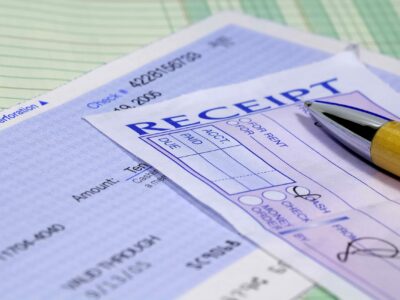![]()
This approach matches the higher usage and faster depreciation of the car in its initial years, providing a more accurate reflection of its value on the company’s financial statements. Of course, the pace at which the depreciation expense is recognized under accelerated depreciation methods declines over time. Double declining balance depreciation allows for higher depreciation expenses in early years and lower expenses as an asset nears the end of its life. With the double declining balance method, you depreciate less and less of an asset’s value over time. That double declining balance method means you get the biggest tax write-offs in the years right after you’ve purchased vehicles, equipment, tools, real estate, or anything else your business needs to run.
- Each method has its advantages, suited to different types of assets and financial strategies.
- We collaborate with business-to-business vendors, connecting them with potential buyers.
- If you’ve taken out a loan or a line of credit, that could mean paying off a larger chunk of the debt earlier—reducing the amount you pay interest on for each period.
- Depreciation is an allocation of an asset’s cost over its useful life.
- Adhering to standards like Generally Accepted Accounting Principles (GAAP) or International Financial Reporting Standards (IFRS) is critical for consistency and transparency.
- The difference is that DDB will use a depreciation rate that is twice that (double) the rate used in standard declining depreciation.
Consolidation & Reporting
On the other hand, with the double declining balance depreciation method, you write off a large depreciation expense in the early years, right after you’ve purchased an asset, and less each year after that. So the amount of depreciation you write off each https://www.bookstime.com/ year will be different. AI-powered accounting software can significantly streamline these depreciation calculations. By automating the complex calculations required for methods like DDB, AI ensures accuracy and saves valuable time.
Double Declining Balance Method vs. Straight Line Depreciation
Proponents of this method argue that fixed assets have optimum functionality when they are brand new and a higher depreciation charge makes sense to match the fixed assets’ efficiency. The Double Declining Balance Method (DDB) is a form of accelerated depreciation in which the annual depreciation expense is greater during the earlier stages of the fixed asset’s useful life. The double declining balance method calculates depreciation by applying a constant rate to an asset’s declining book value. First, the straight-line depreciation rate is determined by dividing 100% by the asset’s useful life. For example, an asset with a five-year useful life has a straight-line rate of 20%. This rate is then doubled to produce the double declining rate, which, in this case, would be 40%.
Management Solution
Under GAAP, depreciation must be systematically allocated over an asset’s useful life to match expenses with revenues. The double declining balance method achieves this by front-loading expenses, which can be useful for assets generating higher revenues in their early years. Depreciation is the process of allocating the cost of a tangible asset over its useful life. It reflects the asset’s reduction in value due to wear and tear, obsolescence, or age.
- The double declining balance method is considered accelerated because it recognizes higher depreciation expense in the early years of an asset’s life.
- By the end of this guide, you’ll be equipped to make informed decisions about asset depreciation for your business.
- Businesses use accelerated methods when having assets that are more productive in their early years such as vehicles or other assets that lose their value quickly.
- For example, an asset with a five-year useful life has a straight-line rate of 20%.
- This formula works for each year you are depreciating an asset, except for the last year of an asset’s useful life.
- It allows users to extract and ingest data automatically, and use formulas on the data to process and transform it.
- Our editorial team independently evaluates products based on thousands of hours of research.
Company

This process continues annually, with depreciation decreasing as the book value declines. Depreciation is the act of writing off an asset’s value over its expected useful life, and reporting it on IRS Form 4562. The QuickBooks double declining balance method of depreciation is just one way of doing that. Double declining balance is sometimes also called the accelerated depreciation method. Businesses use accelerated methods when having assets that are more productive in their early years such as vehicles or other assets that lose their value quickly. Accelerated depreciation is any method of depreciation used for accounting or income tax purposes that allows greater depreciation expenses in the early years of the life of an asset.
When to use the DDB depreciation method

Accelerated depreciation methods, such as double declining balance (DDB), means there will be higher depreciation expenses in the first few years and lower expenses as the asset ages. This is unlike the straight-line depreciation method, which spreads the cost evenly over the life of an asset. By following these steps, you can accurately calculate the depreciation expense for each year of the asset’s useful life under the double declining balance method. This method helps businesses recognize higher expenses in the early years, which can be particularly useful for assets that rapidly lose value. Companies are also required to disclose their depreciation methods and estimates in the notes to financial statements. This transparency helps stakeholders understand the rationale behind the chosen method and its financial impact.

Among the various methods, the double declining balance method stands out for its accelerated depreciation approach, allowing businesses to write off assets more rapidly during their early years. The double declining balance method is considered accelerated because it recognizes higher depreciation expense in the early years of an asset’s life. By applying double the straight-line depreciation rate to the asset’s book value each year, DDB reduces taxable income initially.

Standard declining balance uses a fixed percentage, but not necessarily double. Both methods reduce depreciation expense over time, but DDB does so more rapidly. Leveraging AI in accounting allows businesses to focus on strategic decision-making, reduce errors, and enhance overall financial management. By integrating AI, companies can ensure precise and efficient handling of their asset depreciation, ultimately improving their financial operations. Multiply the straight line depreciation rate by 2 to get the double declining depreciation rate. The DDB method accelerates depreciation, allowing businesses to write off the cost of an asset more quickly in the early years, which can be incredibly beneficial for tax purposes and financial planning.
Cash Management
The double declining balance method accelerates depreciation, resulting in higher expenses in the early years, while the straight line method spreads the expense evenly over the asset’s useful life. Each method has its advantages, suited to different types of assets and financial strategies. Whether you’re a seasoned finance professional or new to accounting, this blog will provide you with a clear, easy-to-understand guide on how to implement this powerful depreciation method. We’ll explore what the double declining balance method is, how to calculate it, and how it stacks up against the more traditional straight-line depreciation method.












